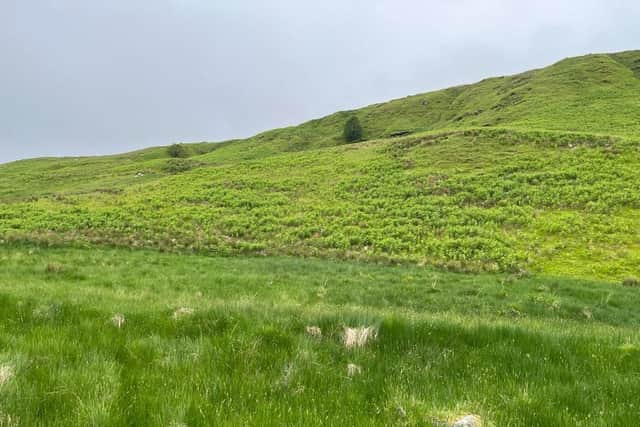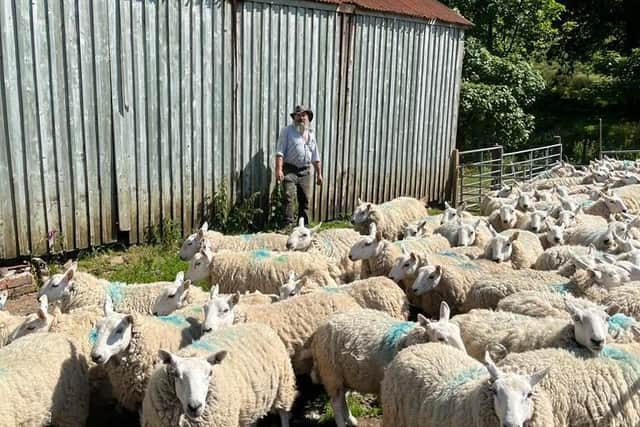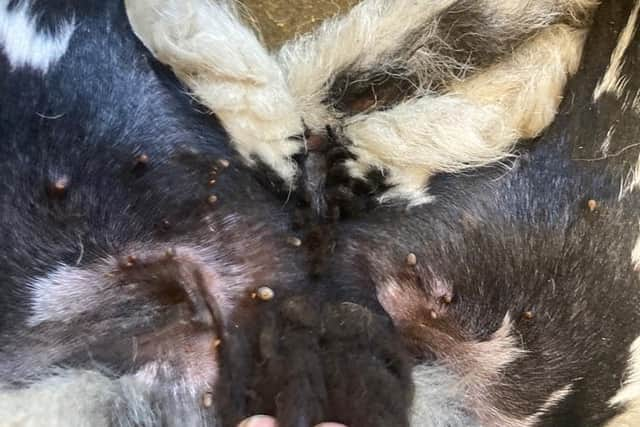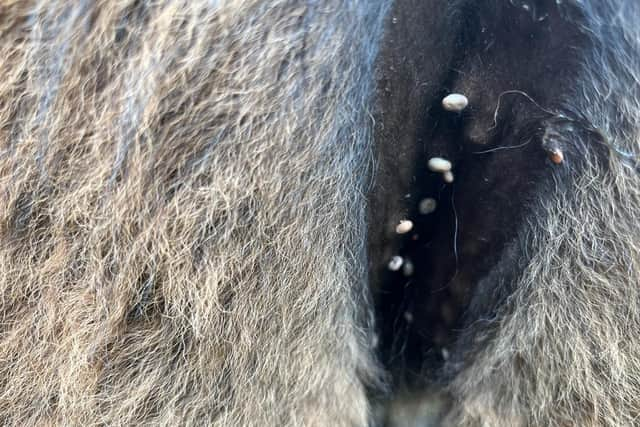Asulox: Scottish farmer says delays to bracken control present 'major human and animal welfare problem'
A farmer has spoken about the devastating impact the spread of bracken is having on his livestock as ministers remain silent over whether or not they will permit a herbicide to control it.
Asulox has been used over the past few decades in aerial spreading to control the invasive weed in the summer months. Farmers have said the helicopters are essential for accessing certain terrain such as hillside farmland where it is too dangerous to go by vehicle.
Advertisement
Hide AdAdvertisement
Hide AdEach year the Scottish Government needs to grant the agriculture sector Emergency Authorisation (EA) to use the herbicide, which is manufactured in India.


Despite there being a short window for bracken control to be effective using Asulox, which starts on July 1, farmers still have no answer.
Brian Walker has 950 breeding ewes and 80 cows on a 2,500-acre hill farm near Inveraray. He used aerial spreading in 2010 to control the bracken, which has kept it at bay for the past decade or so. But it has now grown to a point where it is posing a risk to his livelihood.
"We are at that point now where the bracken is up to a level where we can’t see the sheep,” he said. "We now have really dense bracken, growing on top of dense bracken debris. It means it’s become a hotbed for ticks.”


The farmer said there had been “a massive increase” in the blood sucking arachnids on his livestock this year. Clusters of them appear in the groin areas of his sheep and cattle. “They are covered, and we are worried about the tick-borne diseases they bring,” Mr Walker said.
Louping ill – a viral infection that often causes fatal inflammation of the brain – is one tick-borne illness that impacts livestock.
"It attacks the nervous system,” Mr Walker said. “You don’t want to see a lamb dying of that. We lost one the other day from it.”
But the farmer said the concern goes beyond the welfare of his animals.


Advertisement
Hide AdAdvertisement
Hide Ad"My wife took the dogs out a few nights ago and came back with five ticks on her, and it wasn’t even in an area where the bracken is bad,” he said.
"There are diseases we have to be really careful with as humans like Lyme disease and the new cases of encephalitis.”
In April, the UK Health Security Agency confirmed a case of tick-borne encephalitis in the UK. Encephalitis is a serious condition in which the brain becomes inflamed.
Without permission for Asulox, farmers have had to look to other ways to control the invasive weed and its consequences, Mr Walker said.


At the moment, he is having to put a variety of strong chemicals directly onto the animals to control the ticks.
"Covering them in more treatment is not great for them; it’s a welfare concern,” he said. "And it’s also a huge expense for us when you compare it to just aerial spraying a patch of land once or twice every ten years or so.”
But, aside from ticks, there is also a human safety concern when it comes to controlling bracken on some of Scotland’s rough terrain.
“The land here can reach a 45 degree angle at points,” he said. “So there’s simply no other way to get to it using other methods. It has to be aerial spraying.
Advertisement
Hide AdAdvertisement
Hide Ad"You can’t use any manual control on some of these hills. There’s a huge risk of tumbling down the hillside.
"Also the bracken is so dense so if you’re on the quad you can’t see if you’re going to hit tree stumps or rocks. It’s really dangerous.”
Mr Walker also said the density of the fast-growing weed and build-up of bracken debris can create “a tinderbox”, presenting a major wildfire risk at this time of year.
“If we want to be on track to meet our net-zero targets, leaving the bracken like it is will do no good,” he said.
Mr Walker’s concern come as Scottish farming and land management organisations have taken aim at the Scottish Government for having removed bracken control from its agri-environment scheme this year.
In a joint statement, NFU Scotland, Scottish Land & Estates (SLE), Game & Wildlife Conservation Trust (GWCT) and the Bracken Control Group (BCG) said: “This has not only increased the risks of bracken as set out above, but also reverses the benefits of public money already spent.
"We urge the Scottish Government to restore this option in future rounds of funding.”
The organisations said they believe in the longer term, “a more consistent and strategic approach should be taken for the control of bracken, including the development of an improved stewardship approach that introduces effective controls to manage and monitor the use of the various bracken control techniques, including herbicides”.
Advertisement
Hide AdAdvertisement
Hide AdThe statement added: “While we acknowledge that the EA process for Asulox is far from ideal, because of the lack of alternatives currently available and the tight timescales involved with the application being approved and aerial application permits issued, timely authorisation of Asulox is vital for the necessary control to be undertaken for this season.”
A Scottish Government spokesperson said: “Asulox is a herbicide with no current EU or UK authorisation – an emergency authorisation of the product is required to meet specific legislative conditions, to ensure a high level of protection for human health and the environment.
“The Health and Safety Executive (HSE) has undertaken that assessment process and, as the UK regulator for pesticides, is responsible for assessing emergency authorisation applications across the UK, including for the Scottish Government.
“Scottish ministers have considered the balance of potential risks associated with use of Asulox and those posed by bracken, and promptly responded to HSE’s recommendation. HSE will issue its decision to the applicant once all other UK governments have responded.”
Comments
Want to join the conversation? Please or to comment on this article.